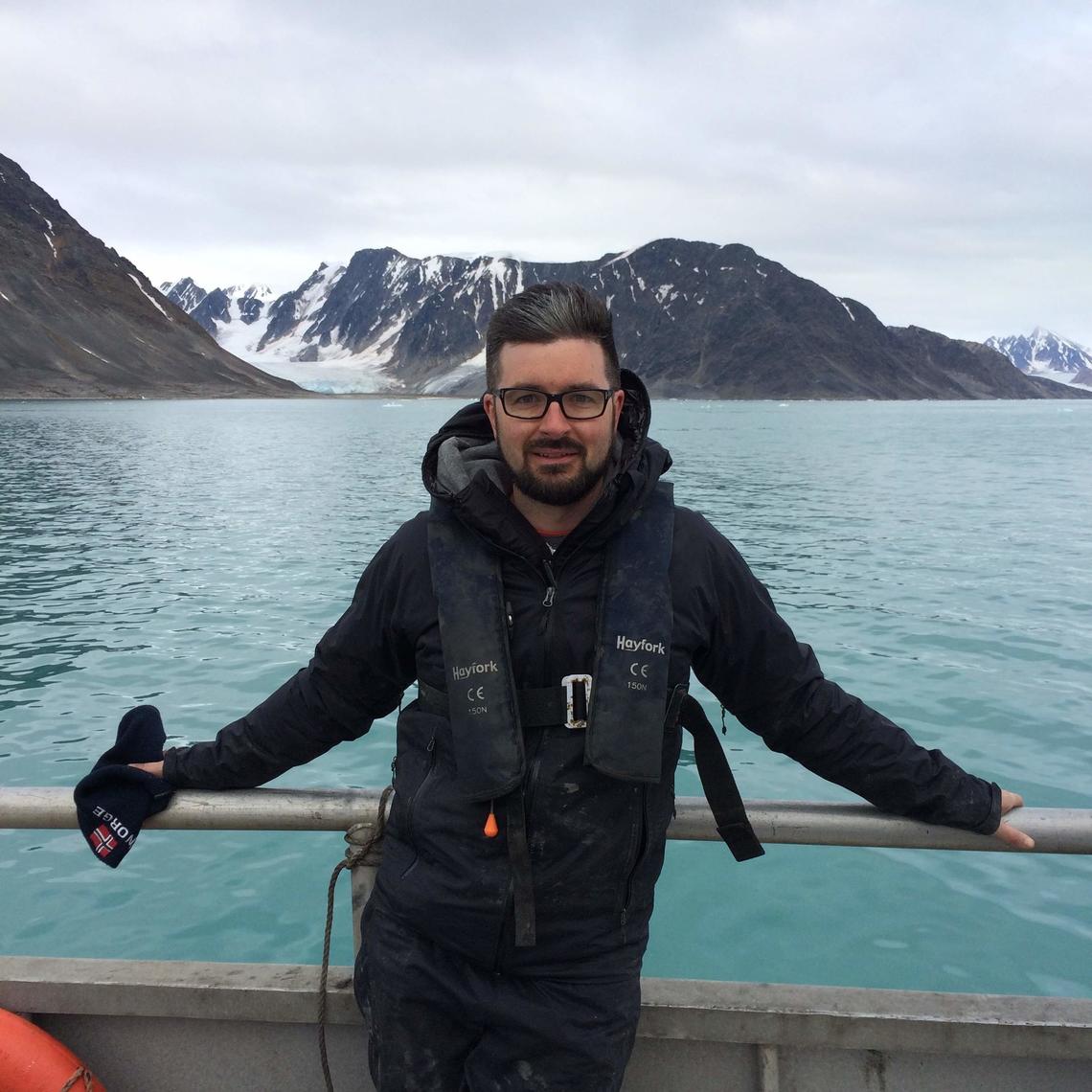July 26, 2019
Geomicrobiologists analyze bacteria growing on hydrocarbons seeping up through seabed

Casey Hubert, associate professor and CAIP Chair in Geomicrobiology at UCalgary
Genome Canada’s Genomics Applications Partnership Program (GAPP) is providing $2 million towards a $6.5-million project for researchers to further develop technologies that find and analyze bacteria collecting at seeps, natural leaks of hydrocarbons that occur on the sea bed deep under the ocean. The project builds on an earlier GAPP-funded project where researchers compared genomics data with petroleum geochemistry data to help identify petroleum deposits offshore Nova Scotia.
The project, Validation and Integration of Genomics Solutions for Offshore Oil Exploration in Nova Scotia and Beyond, was announced July 23 by the Hon. Kirsty Duncan, minister of science and sport, one of 20 projects across Canada to receive GAPP funding. Additional support is coming from other contributors that include the Nova Scotia Department of Energy and Mines, Geological Survey of Canada, Natural Resources Canada, Research Nova Scotia Trust, Offshore Energy Research Association (OERA), Mitacs Canada and Applied Petroleum Technology Canada (APT).
Dr. Casey Hubert, PhD, associate professor and CAIP Chair in Geomicrobiology at the University of Calgary, is co-leading the project with Dr. Todd Ventura, PhD, Canada Research Chair in Petroleum systems at Saint Mary's University in Halifax and Adam MacDonald from the Nova Scotia Department of Energy and Mines.
Genomic information about the bacteria in the seabed “adds extra layers of data” to traditional geoscience mapping used to explore for offshore oil deposits, says Hubert. “Certain bacteria get energy from oil — they oxidize it, similar to a car engine. These marine microbes proliferate in areas where oil leaks naturally. Our lab focuses on geomicrobiology — bridging geoscience and microbiology. If different seabed maps from various disciplines point in the same direction, one can be more confident about the presence of a working petroleum system.”
Hubert and his colleagues will go back to sites offshore Nova Scotia where they previously identified samples of bacteria and archaea associated with hydrocarbons. This time, they’ll use more sophisticated equipment — autonomous underwater vehicles (AUV) and remotely operated vehicles (ROV) for video-guided sampling. With the improved sampling, they’ll develop new omics tools and approaches for high resolution seabed mapping.
“We will integrate a broader suite of omics technologies, including rapid DNA sequencing using hand-held devices that will enable genomics to guide daily sampling decisions on a ship while out at sea,” says Hubert. “And the great thing is, using seabed microbial biodiversity to map subsurface petroleum potential will simultaneously generate environmental baseline data for these regions.”
Exploring the links between marine bacteria and traditional geoscience
“This project is expanding on the microbiological toolkit with the addition of lipidomics,” says co-lead Ventura. “Additionally, speed is everything. With the development of a lab on a ship and AI-based data mining, we hope to greatly improve the turnaround time between sample acquisition, processing and data analysis – all of which will help exploration companies in their decisions.”
The government of Nova Scotia is interested in “de-risking” offshore exploration. “Adding new tools and building innovative and integrated projects such as this collaboration with the University of Calgary and Saint Mary’s University gains recognition and attention to our quality and capacity to compete,” says Adam MacDonald, NS Department of Energy and Mines. “Not only do we de-risk exploration but this project provides environmental baseline information on the benthic life and communities that may be dependent on natural occurrences of hydrocarbon on the seafloor.”
Genome Alberta and Genome Atlantic are co-managing the project. Other major contributors include the Nova Scotia Department of Energy and Mines, Geological Survey of Canada, Natural Resources Canada, Research Nova Scotia Trust, Offshore Energy Research Association (OERA), Mitacs Canada and Applied Petroleum Technology Canada (APT).
Genome Alberta is a publicly funded, not-for profit corporation which invests primarily in large-scale genome sciences research projects and technology platforms focused on areas of strategic importance to the province including, forestry, plant and animal agriculture, energy, environment, and human health. By working collaboratively with government, universities, and industry, Genome Alberta is a catalyst for the province’s life sciences cluster with far-reaching social and economic benefits for Alberta and Canada. To date, the organization has managed a research portfolio with approved budgets of over $228 million. Please visit GenomeAlberta.ca for more information.
Genome Atlantic is a not-for-profit corporation with a mission to help Atlantic Canada reap the economic and social benefits of genomics technologies. Since its inception in 2000, the corporation has worked with a range of private and public-sector partners to enable more than $100 million in new genomics R&D. Please visit genomeatlantic.ca for more information.

